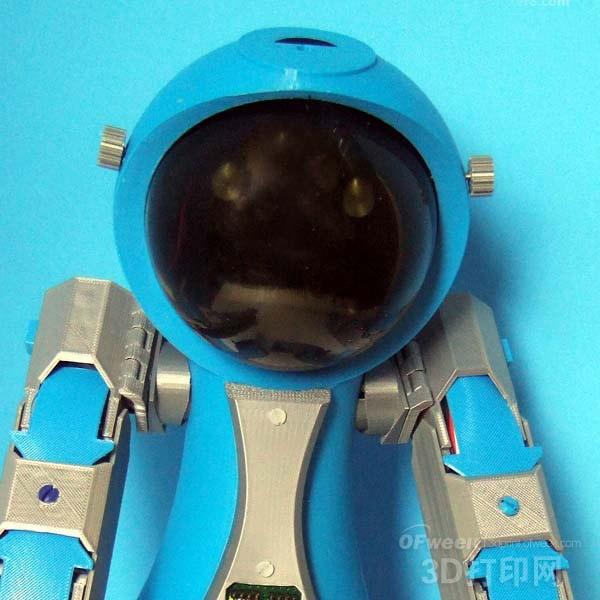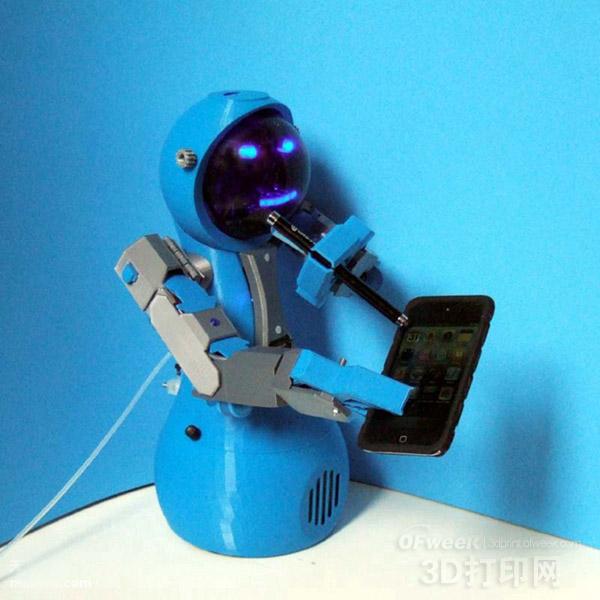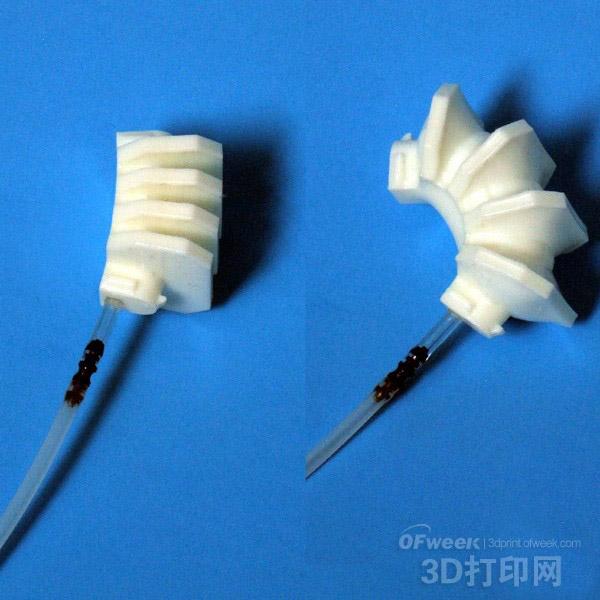3D printing artificial muscles can help people with limited mobility
Today, many people with physical disabilities or debilitating 3D printer is already in use to aid people improve their quality of life, and it is a Zizzy such a robot. Designed by Michael Royba, Zizzy is a 3D printed personal robot that is used to help those with limited mobility. It speaks, expresses emotions, and manipulates food, water, and communication equipment. The most interesting part of Zizzy is its 3D printed pneumatic artificial muscles, which are made with 3D printed hollow bellows and printed with NinjaFlex. These 3D printed muscles are coated with fabric glue and MEK solvent, and the weight of 20 pounds per square inch is no problem.
In addition, Zizzy's head, body, arms, mounting brackets, air control valves, and artificial muscles that drive the arms and grippers are all 3D printed. Roybal has shared Zizzy on the DIY hot station Instructables, and Zizzy is entirely composed of open source software and open source hardware. Essentially, it will use its two arms to help pick up objects such as drugs, food and smartphone devices and bring them to people with reduced mobility. Zizzy will be able to implement remote control or autonomous action, while an infrared remote control can be used to connect it to a wheelchair or another type of controller.

Zizzy's modular structure allows users to create and update new muscles and grippers, and the call circuitry and the neurons that control the robot can be modified and inserted back. As of now, Zizzy's facial features are not comprehensive, and the broader vocabulary needs to be integrated. Roybal is designing a new arm exoskeleton with which Zizzy can move each joint 80 degrees, which is a huge improvement over the current 48-degree mobile design. In addition, he designed a larger, stronger gripper and muscle.

Although a large number of tests have proven that Roybal's 3D printing robot is a viable auxiliary device, Roybal hopes to add and modify more components. In some cases, Roybal wants to add some infrared sensors to Zizzy's head scanner, which will allow it to locate the face and set its direction accordingly. Roybal is also looking for ways to reduce the noise generated by the robot while it is running, and it is possible to redesign the geometry of the artificial muscle to increase the output power.

In short, Zizzy provides a useful and friendly service for those who need mobility assistance. Over time, it will continue to improve itself and continuously improve the quality of life of its users.
Deboning chicken is a time-consuming process and large meat processing plants deal with significant amounts of meat. Even if a plant employs a large number of workers to debone poultry manually, it will still be costlier and more time-consuming than utilizing deboning machines. Additionally, manual deboning has a negative effect on the freshness and quality of the meat. To solve these problems, Helper deboners provide excellent efficiency and output.
You can preprocess the poultry by cutting them into parts, and then efficiently debone separated meat by Helper deboner, which means customers only need to purchase the meat and segment it. Sunby deboners can quickly debone the meat and has less influence on the meat quality during the processing. Moreover, there are many models of deboners to meet your different demands.
After processing, minced poultry can be made into chicken nuggets, sausages, etc.. The remaining crushed bone can be made into pet feed because it contains a lot of protein to that makes for high quality nutritional supplements.
QGJ-100 300-350kg/h
QGJ-130 600-800kg/h
QGJ-160 1200-1500kg/h
QGJ-180 2000-3000kg/h
QGJ-220 3000-4000kg/h
QGJ-300 4000-5000kg/h
Meat Deboner, Bone meat separating machine, Poultry deboning machine, Meat Bone Separator, red meat deboning machine
Helper Machinery Group Co., Ltd. , https://www.helperfoodtek.com